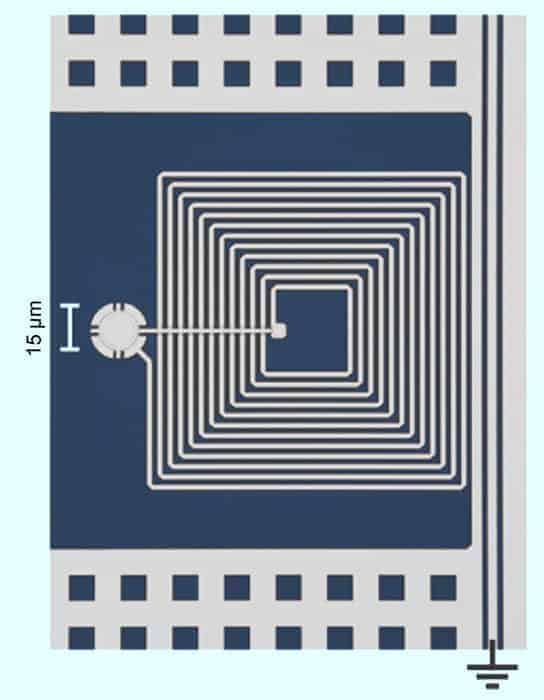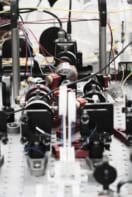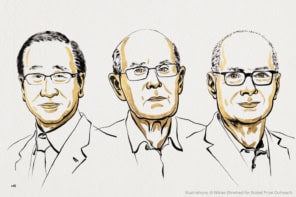
Physicists in the US say they are the first to store – and then retrieve – quantum information in a mechanical oscillator. Their device consists of an extremely thin disc of aluminium that is connected to a microwave circuit. Quantum information encoded in a microwave signal is transferred to the disc, which vibrates much like a drumhead. This information can then be retrieved by converting the mechanical oscillations back into microwaves.
Built by Konrad Lehnert and colleagues at the National Institute of Standards and Technology in Boulder and the neighbouring University of Colorado, the team says the device can store quantum information for long enough to make it a potential candidate for a future quantum computer. Such machines could, in principle, outperform conventional computers at certain tasks, but require quantum bits (or qubits) that can store and transfer quantum information without it being destroyed by interacting with the outside world.
Cool stuff
Like many attempts to make “quantum memory”, the qubits built by Lehnert and colleagues are “mesoscopic” objects – small enough to behave as quantum systems, yet large enough to fabricate on a chip and connect to other qubits. Weighing just 48 pg, their drumhead is a circular sheet of aluminium 15 μm in diameter and 100 nm thick. The entire device was chilled to 25 mK and the drum itself is put into its lowest-energy vibrational state (its ground state) using a microwave cooling technique.
Quantum information is first encoded in the amplitude and phase of a microwave pulse. This pulse is then sent along a waveguide that sits next to a spiral-like resonant circuit that includes the drum (see figure; click to enlarge). The circuit is designed such that the pulse is completely absorbed by the circuit and the microwave energy is converted to vibrational energy stored in the drum. “At the end of the process, the mechanical oscillator quivers with a particular amplitude and phase, which is the amplitude and phase that the microwave signal had before it was absorbed,” explains Lehnert.
Towards improved efficiency
This absorption process is controlled using a second microwave signal, with the presence or absence of this “transfer field” determining whether the pulse can move from the waveguide to the resonant circuit and vice versa. To read out the quantum information, the transfer field is adjusted so that the vibration of the drum is converted back to a microwave pulse, which can then jump into the waveguide and be measured by Lehnert and colleagues.
In a typical experiment the team was able to store quantum information for about 25 μs without it degrading significantly. The team was also able to successfully store and retrieve the pulses in about 65% of attempts. According to Lehnert, this inefficiency arises because the microwave circuit is not perfect and some of the microwave signal is lost. But he is confident that smaller circuits will improve the performance. “We believe the prospects for improving this number are quite good, as other researchers have recently demonstrated microwave circuits with loss about 100 times smaller than we achieved,” says Lehnert.
Lehnert told physicsworld.com that his team’s drums could be used in conjunction with superconducting qubits, which also operate at low temperatures and microwave frequencies. While mechanical oscillators cannot easily be connected with each other to create logic devices, they could be used to store quantum information that is then processed in superconducting devices. In particular, Lehnert points out that the linear nature of the device means that it could be used to store more than one qubit at the same time.
Optical boost
Another possible application in quantum information is using mechanical oscillators as quantum transducers, which convert quantum information from one form to another. “We are working on using mechanical oscillators to convert quantum information encoded in microwave electrical signals into information encoded as an optical field [light],” Lehnert says.
Converting qubits from microwave to optical signals could play an important role in large-scale quantum information systems of the future. Although microwaves are very well suited for transferring quantum information in small ultracold devices, they cannot carry information over large distances. Optical signals, on the other hand, can travel tens or even hundreds of kilometres without losing their quantum nature.
The research is described in Nature.



